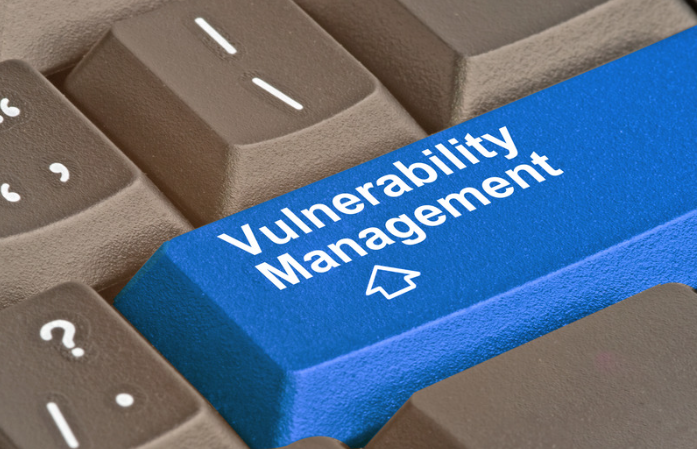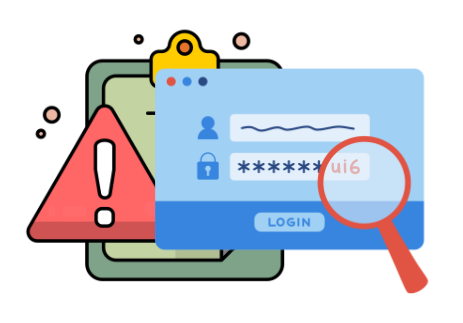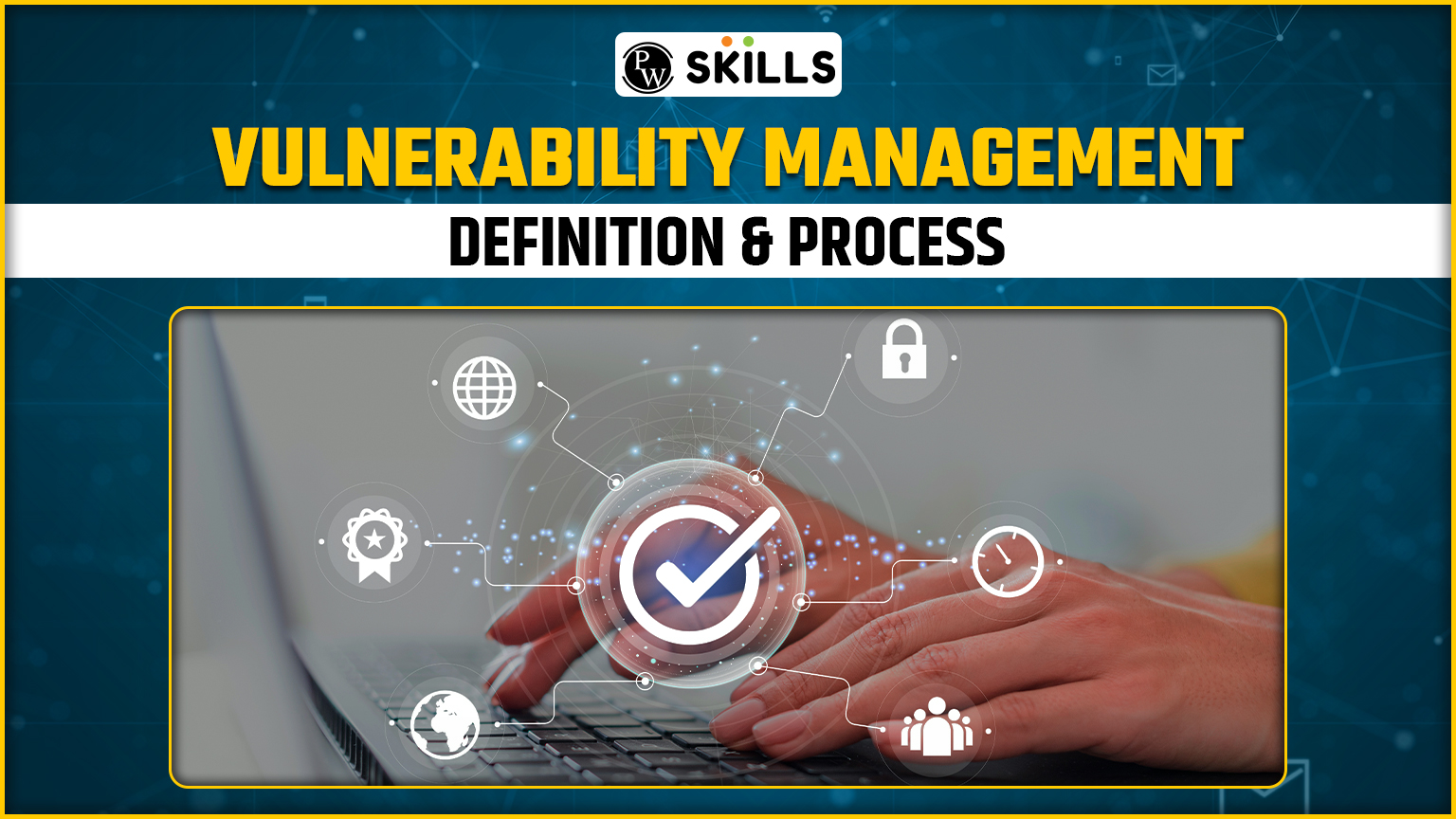Vulnerability management is an inherent part of network and computer security. It is a continuous and proactive process of assessment and remediation of vulnerabilities and is often automated. It keeps the computer systems, software, and networks of an organization safe from data breaches and cyber-attacks.
It is the process of enabling security teams to identify and remediate security vulnerabilities in IT (Information Technology) assets to prevent hackers from exploiting them.
About 49 percent of all organizations face one or more breaches in a year and software breaches form the largest part of them all. Such a statistic explains the need to include vulnerability management programs in the security strategies of companies or digital enterprises. Let us understand the steps and tools involved in vulnerability management.
Vulnerability Management: Key Takeaways
- Vulnerability management is a cyclical process of identifying, prioritizing, and remediating software security issues and vulnerabilities.
- It is a comprehensive process with several steps that incorporate the identification, classification, prioritization, remediation, and mitigation of probable software vulnerabilities.
- Vulnerability management is an inherent computer and network security and should not be confused with vulnerability assessment.
Understanding Vulnerability Management: Definition
The ever-shifting digital landscape poses several threats. In such a condition, vulnerability management acts as a protector of all systems. It refers to a diligent proactive process of identifying weaknesses and lags in a system, assessing probable challenges and risks, and mitigating them.
Vulnerability management is a comprehensive process that incorporates deep scanning, strategic risk prioritization and effective remediation while empowering organizations and enterprises to stay secure and resilient against evolving exploits, threats, and vulnerabilities.
What is Vulnerability Management in Cyber Security?
In cybersecurity, vulnerability refers to the faulty pieces in a software code that cause it to crash or react in different ways than originally planned. Most often, vulnerabilities are leveraged into the systems by hackers to gain unauthorized access to perform unauthorized activities for personal gain.

The management of such vulnerabilities in a system’s software code which may arise by self or by hackers is called vulnerability management in cybersecurity. Besides vulnerabilities, vulnerability management in cybersecurity also caters to mitigating threats and exploits.
In general terms, vulnerabilities refer to the weaknesses in a system. When these weaknesses are exploited by external attacks such as hacking etc., they are referred to as threats. On the other hand, exploits are specific techniques used to exploit vulnerabilities by threat actors to gain unauthorized access or to compromise the system.
Importance of Vulnerability Management and Challenges Involved
It just takes one attack on the hackers’ part to exploit an existing vulnerability in the system’s software, gain unauthorized access and steal useful and confidential data leading to severe losses to a company. This is probably why the Centre for Internet Security (CIS) has published vulnerability management among its top 10 security controls.
To safeguard one’s system and all the data within, it is important to secure one’s system against all vulnerabilities, threats and exploits. But before that, it is necessary to understand the barriers to vulnerability management. These challenges are discussed as follows:
- Most organizations have too many vulnerabilities that are not possible to manage manually. Also, most of them do not pose the same risks. It is a hectic job to manage numerous vulnerabilities across hundreds and thousands of varying assets in a network.
- There is a shrinking window between vulnerability disclosure and its exploitation by threat actors. This demands swift mitigation.
- With limited resources and time and the absence of a risk background, it is difficult to prioritize vulnerabilities.
- Several tools available in the market for vulnerability management are fragmented and ineffective as they are often formed by combining patch management tools and multiple tools of vulnerability assessment.
- The ignorance of loopholes in the system and their untimely remediation pose greater threats in the future.
- The ideal remediation option for vulnerability management is vendor-published patches. However, they should not be used for unpatchable circumstances like zero-day vulnerabilities and end-of-software. For these, having a fail-proof plan of retreatment is essential.
It is very important for companies to assess various types of financial risks that can harm their growth and objectives. Vulnerability management makes sure to keep these risks at bay.
Vulnerability Management Process and Tools
The main steps involved in the vulnerability management process include:
1. Identifying Vulnerabilities
Identification of software vulnerabilities is the first step in their management. This can be effectively done by vulnerability assessment that uses manual and automated techniques to assign levels of severity to security weaknesses after identifying them.
Another method is to use vulnerability scanners. They use scanners to probe networks and systems to find prospective vulnerabilities.
2. Evaluating Vulnerabilities
Evaluation of vulnerabilities depending upon their risk level, nature etc. is an important step in vulnerability management.
3. Prioritizing Vulnerabilities
A simple way to prioritize software vulnerabilities is to base them on their impact level and potential exploitability.
4. Mitigating Vulnerabilities
By using varied manual and automated techniques, vulnerabilities can be mitigated. The use of vendor-based updates to close security vulnerabilities is one of the many ways to remediate vulnerabilities. Other ways include the use of patches to fix security holes and bugs.
5. Reporting Vulnerabilities
Vulnerability management is only fruitful in the long run when vulnerability reports are prepared and analyzed for better management. The information from these reports is instrumental in helping organizations frame plans to improve the overall security of their networks and software systems.
Features of Vulnerability Management
The main features of vulnerability management for complete 360-degree protection are as follows:
- Vulnerability Assessment: Vulnerability assessment involves leveraging risk-based assessment to prioritize impactful and imminent vulnerabilities.
- Security Configuration Management: Security configuration management involves the identification of configuration drifts and misconfigurations and then bringing them to compliance.
- High-risk Software Auditing: High-risk software auditing involves eliminating and auditing unauthorized software in the network.
- Web-Server Harden: Web server hardening is used to safeguard internet-facing servers from attack variants like clickjacking and XSS.
- Patch Management: Patch management automates the patching of Windows, Linux, and Mac over third-party applications.
- Active Port Auditing: Active port auditing involves the identification of active ports that have been activated via malicious attackers.
Vulnerability Management Jobs

In the ever-expanding IT sector, vulnerabilities pose a serious threat, opening a wide range of services in vulnerability management in varied organizations. The major job offer that comes is that of a Vulnerability Management Analyst or Threat Management Analyst.
Going with the name, the main function of a vulnerability management analyst is to identify, classify, prioritize, mitigate, and report system vulnerabilities in the IT sector. It plays an important role in protecting the assets of an organization from security threats.
The responsibilities of a vulnerability management analyst are listed as follows:
- Conducting Vulnerability Scans: They use automated vulnerability scanners to assess networks, systems, and applications for vulnerabilities and weaknesses. These scans can be unauthenticated or authenticated.
- Evaluation of Threats: They evaluate potential threats and assess where networks or systems deviate from acceptable configuration.
- Working with Teams: They collaborate with security and IT teams to implement mitigation strategies.
- Providing Inputs: They provide input on security standards and policies for network advice.
- Preparing Reports: They present and prepare reports that document vulnerability trends and areas to improve.
- Recommending Tools: They recommend new and effective security tools and techniques to improve security.
Get Familiar with Vulnerability Management via PW Skills
Learn about the fundamentals of vulnerability management and vulnerability management tools to carve out a successful career as a risk manager by building adequate skills! Achieve deep financial learning with our Financial Mastery Analysis and Modeling Course.
Command a strategic hold on risk management with in-depth learning via interactive classes taught by expert mentors, varied practice exercises and sets, certification, practical projects, and much more at pwskills.com!
Vulnerability Management FAQs
Q1. What are the risks to be noticed in vulnerability management?
Ans: Risk factors that must be noticed in vulnerability management generally include asset criticality, severity ratings, CVSS scores, exploitability, patch availability, and vulnerability age for better analysis.
Q2. What is the difference between vulnerability management and vulnerability assessment?
Ans: Vulnerability assessment is a part of the proactive vulnerability management process. The vulnerability management process includes identifying, assessing, prioritizing, and mitigating security vulnerabilities in systems or networks. On the other hand, vulnerability assessment is limited to the identification of probable vulnerabilities in the system along with the evaluation of weaknesses and their effects on the system and performance.
Q3. Who uses vulnerability management?
Ans: Companies, organizations, and modern enterprises use vulnerability management programs to ward off all probable vulnerabilities to safeguard their systems.

